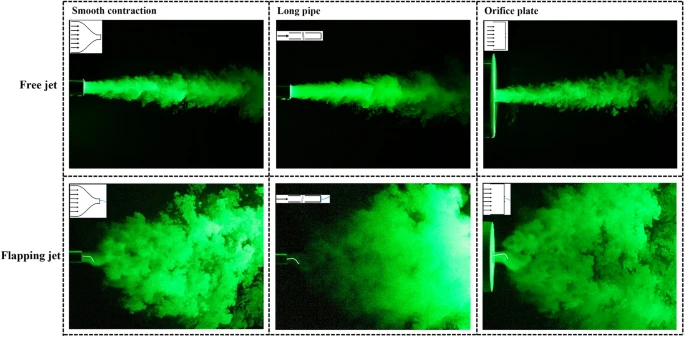Abstract
A novel method for the self-excitation of a flapping jet by a flexible film has been developed recently by Xu et al. (Exp. Ther. Fluid Sci. 2019, 106, 226–233). The present work is to advance our understanding of this kind of oscillating jets by experimentally examine their dependence on initial flow condition. Specifically, detailed investigations are made on characteristics of both film flutter and jet mixing due to initially distinct flow conditions made by circular nozzles of smooth contraction (SC), orifice plate (OP) and long pipe (LP). Present flapping jets are self-excited by a rectangular FEP film with one end fixed at the nozzle exit. Hot wire anemometry and laser-sheet flow visualization are adopted for the present experiments. Experimental results demonstrate that the film-flutter characteristics are considerably nozzle-dependent. In particular, the OP nozzle yields the largest film-flutter domain and the lowest energy loss for fluttering. It is also shown that the three nozzles’ flapping jets exhibit substantially different mixing characteristics due to their distinct initial conditions. Specifically, the OP jet exhibits the highest flapping Strouhal number, highest velocity decay rate, strongest relative turbulence intensity, and largest length scales of turbulence. And the flapping SC and LP jets are compatible in mixing characteristics. Relative to the conventional (non-flapping) free jets, all the present flapping jets entrain and mix the surrounding fluid at a much higher rate, consequently spreading and decaying far more rapidly. Importantly, when the flapping Srouhal number is sufficiently high or low, the small-scale mixing appears to be enhanced or depressed by the flapping in the near field and then maintain farther downstream.

